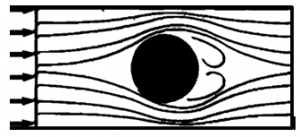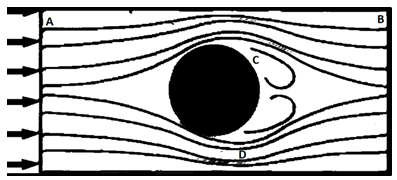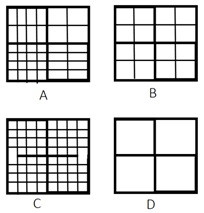This set of Finite Element Method Questions & Answers for Exams focuses on “Some Comments on Mesh Generation and Imposition of Boundary Conditions”.
1. In Finite Element Method (FEM), which option is not correct with respect to discretization or mesh generation?
a) Density of elements depends on the degree of accuracy desired
b) Choice of element type may depend on the geometry of domain
c) For better accuracy correct formulae has to be applied
d) Some general rules govern mesh generation
View Answer
Explanation: In Finite Element Method (FEM), for discretization purpose there are no specific formulae to obtain mesh generation as it depends on the expertise of the analyst. However, the density of elements,choice of element type may depend on the degree of accuracy desired and the geometry of domain.
2. In Finite Element Method (FEM), Mesh convergence is a measure of the number of _____ required in a model to ensure that the results of an analysis are not affected by changing the size of the _____
a) elements, mesh
b) nodes, mesh
c) nodes, element
d) degrees of freedom, element
View Answer
Explanation: Mesh convergence determines how many elements are required in a FEM model to ensure that the results of an analysis are not affected by varying the size of the mesh. Once the mesh is converged, no change is observed in the results even after changing the density of the mesh.
3. In Finite Element Method (FEM), While domain discretization, at which of the following geometrical cases a node is not required?
a) Change in cross-section area only
b) Change in cross-section only
c) Change in cross section area as well as change in cross-section
d) No change
View Answer
Explanation: While domain discretization, a node is necessary to be placed whenever there is a geometric discontinuity. For example, a change in cross section area or change in cross-section or both.
4. In Finite Element Method (FEM), In order to increase accuracy of a solution, while domain discretization, more than one node is to be placed at a point source.
a) True
b) False
View Answer
Explanation: While domain discretization, a single node is placed at a point source and the point source is assumed to lumped at that node. Since there is no division of a point load, its discretization plays no role in determining accuracy of the solution.
5. For an inviscid flow of a fluid around a cylinder in an open channel as shown, the flow in the surroundings of the cylinder gets _____ and thus, the flow becomes ___

a) accelerated, non-uniform
b) decelerated, unsteady
c) accelerated, unsteady
d) compressed, non-uniform
View Answer
Explanation: Since the section of the cylinder is smaller than the inlet section of the channel, for an inviscid flow around the cylinder in an open channel as shown, the flow in the surroundings of the cylinder gets accelerated and thus, the flow becomes non-uniform. This phenomenon is a result of conservation of mass.
6. For an inviscid flow of a fluid around the cylinder in an open channel as shown, the flow in the surroundings of the cylinder gets accelerated. At which points, A, B, C and D the mesh is created finer than the other points?

a) Both A and B
b) Either A or B
c) Both C and D
d) Only at D
View Answer
Explanation: For an inviscid flow around the cylinder in an open channel as shown, the flow in the surroundings of the cylinder gets accelerated and away from cylinder (e.g., at the inlet) flow is uniform. Knowledge of qualitative behavior of the flow helps one to use a coarse mesh at far from the cylinder, and a fine one at closer distances. Another purpose of using a refined mesh near the cylinder is to exactly represent the curved boundary of the domain there.
7. In Finite Element Method (FEM), for discretization purpose in general, a refined mesh is employed in areas where changes in geometry, boundary conditions, loading, material properties or solution are present.
a) True
b) False
View Answer
Explanation: For an inviscid flow around the cylinder in an open channel, the flow in the surroundings of the cylinder gets accelerated and away from cylinder (e.g., at the inlet) flow is uniform. Knowledge of qualitative behavior of the flow helps one to use a coarse mesh at far from the cylinder, and a fine one at closer distances. Another purpose of using a refined mesh near the cylinder is to exactly represent the curved boundary of the domain there.
8. In Finite Element Method (FEM), for discretization purpose in general, which 2D element is an undesired one?
a) An equilateral triangle of side 5 units
b) A quadrilateral
c) A rhombus of side 10 units
d) A rectangle of dimensions 100×1
View Answer
Explanation: During discretization, when a mesh is made, care should be taken to avoid elements with very large aspect ratios (i.e. the ratio of one side of an element to the other) or small angles. In finite element equations the coefficient matrices depend on the aspect ratios. If the aspect ratios is very large, the resulting coefficient matrices are ill—conditioned (i.e., numerically not invertible).
9. In Finite Element Method (FEM), for discretization purpose in general, which optionis not true for mesh refinement?
a) Previous meshes should be contained in the refined mesh
b) Any point in the body can be included within an arbitrarily small element at any stage of the mesh refinement
c) The same order of approximation for the solution may be preserved through all stages of the refinement process
d) Elements with very large aspect ratios are desired
View Answer
Explanation: A mesh refinement should satisfy three conditions, 1) previous meshes should be contained in the refined mesh, 2) Any point in the body can be included within an arbitrarily small element at any stage of the mesh refinement 3) The same order of approximation for the solution may be preserved through all stages of the refinement process.
10. In Finite Element Method (FEM), for discretization purpose in general, which of the following mesh cannot be a part of mesh refinement process?

a) A
b) B
c) C
d) D
View Answer
Explanation: A mesh refinement should satisfy three conditions, i) previous meshes should be contained in the refined mesh otherwise mesh refinement is not correct, ii) Any point in the body can be included within an arbitrarily small element at any stage of the mesh refinement iii) The same order of approximation for the solution may be preserved through all stages of the refinement process.
11. To discretize a domain using rectangular elements, if the aspect ratio is to be limited to 10, which dimension (mm) of rectangular element gives finest mesh?
a) 1×0.5
b) 1.1×0.1
c) 0.11×0.01
d) 0.1×0.05
View Answer
Explanation: During discretization, when a mesh is made, care should be taken to avoid elements with very large aspect ratios (i.e. the ratio of one side of an element to the other). For a>b, if axb are dimension (mm) of rectangular element then it is given that a/b should not be more than 10. The smaller the element the finer is the mesh.
12. In Finite Element Method (FEM), choose the incorrect option regarding to the dimensions (mm) of elements in a finite element mesh?
a) Elements with very large aspect ratios are avoided
b) Elements with small angles are undesired
c) The coefficient matrices in finite element equations depend on dimensions of elements
d) Rectangular elements with high aspect ratio are preferred
View Answer
Explanation: During discretization, when a mesh is made, care should be taken to avoid elements with very large aspect ratios (i.e. the ratio of one side of an element to the other) or small angles. In finite element equations the coefficient matrices depend on the aspect ratios. If the aspect ratios is very large, the resulting coefficient matrices are ill—conditioned (i.e., numerically not invertible).
Sanfoundry Global Education & Learning Series – Finite Element Method.
To practice all exam questions on Finite Element Method, here is complete set of 1000+ Multiple Choice Questions and Answers.
If you find a mistake in question / option / answer, kindly take a screenshot and email to [email protected]
- Practice Mechanical Engineering MCQs
- Practice Civil Engineering MCQs
- Apply for Civil Engineering Internship
- Check Finite Element Method Books
- Check Mechanical Engineering Books
